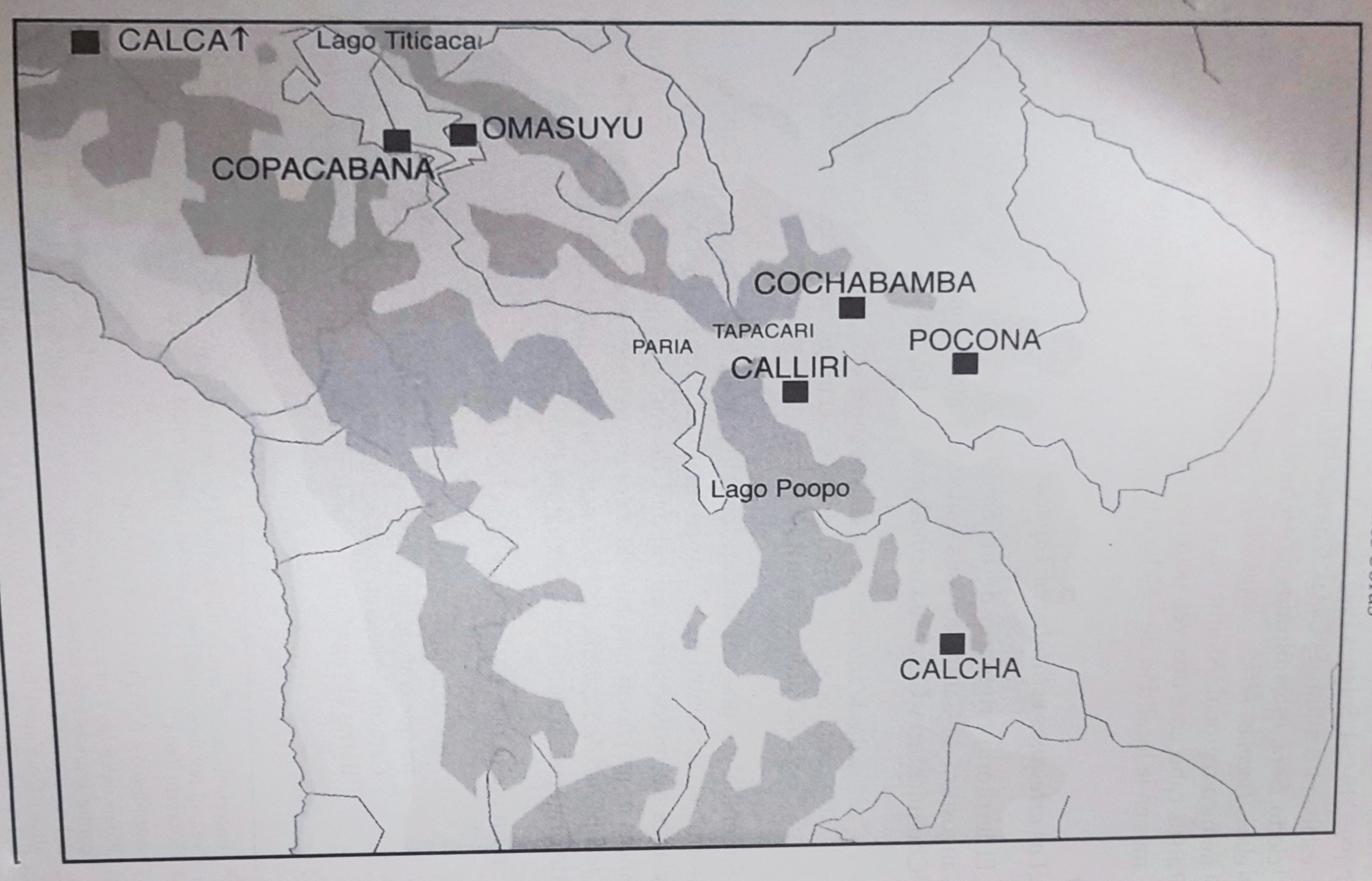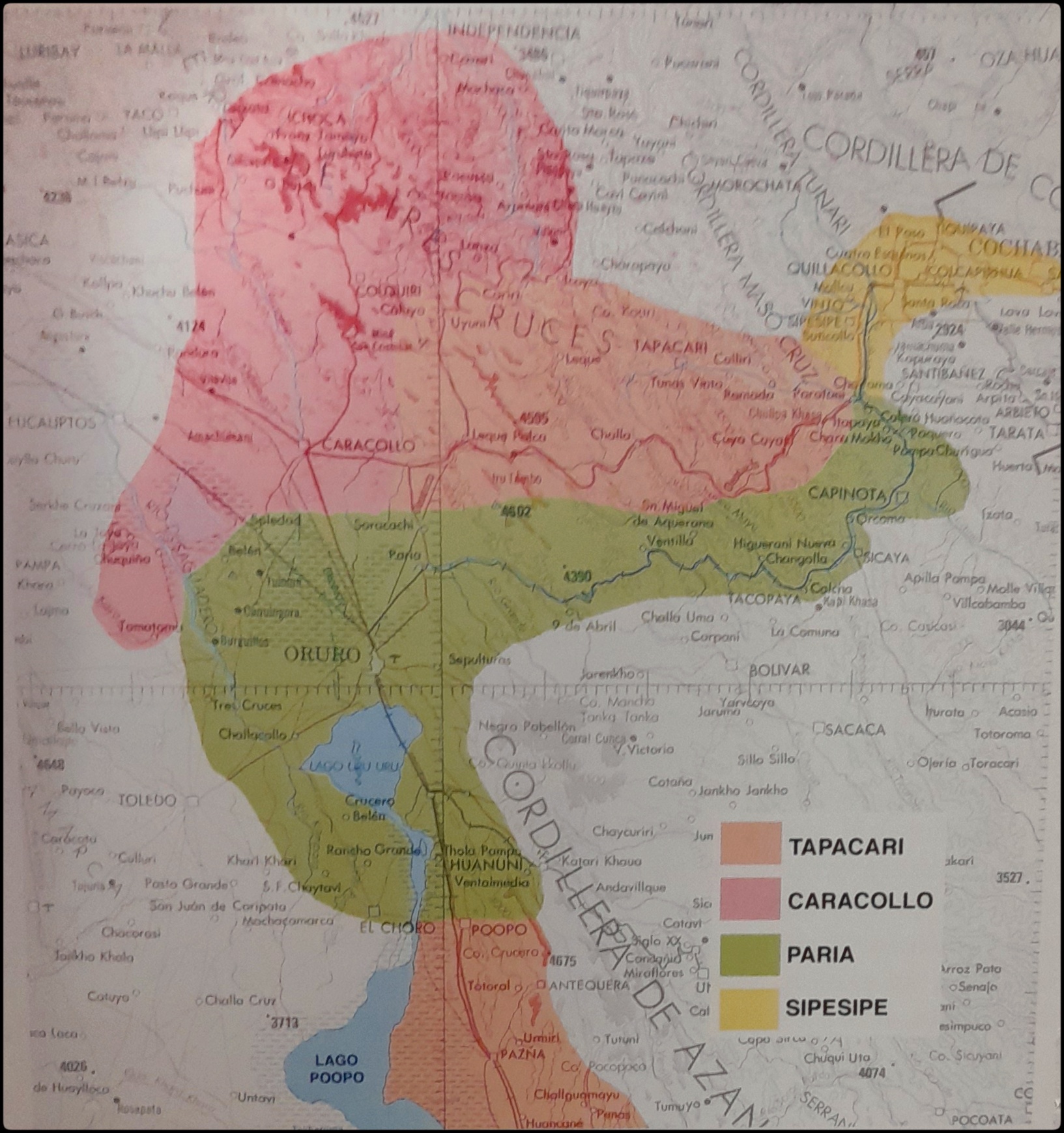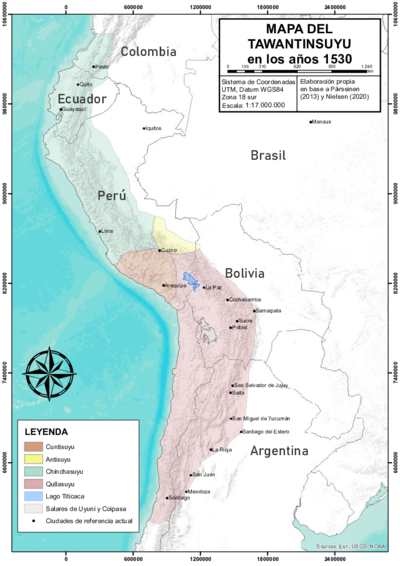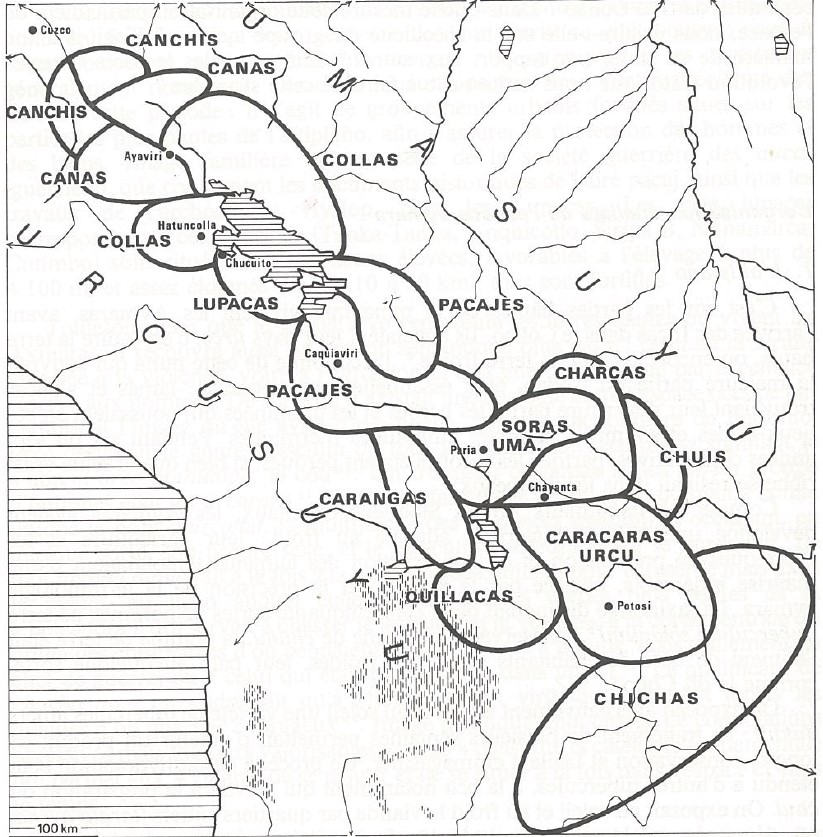Abstract
The map displays the colonies or “islands” of the Aymara lordship AYMARA POLITIES of THE QULLASUYU in the 16th CENTURY or Sura confederation THE AYMARA LORDSHIP OF THE SURAS IN THE 16TH CENTURY established by the Incas in areas claimed as territories of the Inca state, in the context of the expansion and consolidation of [Tawantinsuyu](/en/content/BOL0001Y/). As we may understand from the map, there were “islands” of the Sura peoples that were relocated in places quite far from their high plateau centers, for example, in the Inca ritual center of Copacabana (Lake Titicaca), in several sites along the central valley of Cochabamba —such as the present city of Cochabamba—, in the territory of the Aymara lordship of the Chichas —as was the case of Calcha— or in Pocona on the eastern border of the Inca state, a semitropical region that was important for the state because of its coca leaf production. The Suras resettled in Calcha —on the southeastern border— and Pocona also helped defend these borders and consolidate the territory controlled by the Inca state.These relocation policies were not intended to divide the Sura population, although they may have occasionally attempted to do so, but rather were applied as strategies based on the reliability and loyalty of the Suras as crucial allies of the Inca state.1 The Incas based the implementation of relocation policies on the model of “vertical control of ecological niches.” Thus, they sought to defend the expanding borders and to increase agricultural production for the state. The reason for resettlement could be due to the hostility of some ethnic groups, or as a reward for loyalists with access to new lands in the valley. On occasion, the Incas would displace large population segments to very distant areas, thus changing the ethnic composition of the conquered territories. The groups who had been relocated to fulfill military, productive, cultural, or political functions were known as mitmaqkunas —or mitimaes in colonial records—, which inevitably gave way to the development of multi-ethnic colonies, although they retained, in principle, their ethnic ties to their original communities. In practice, however, they were under the direct supervision of state officials and administrators.
**In short, the composition and location of the different nations and ethnic groups that the Spaniards found when they conquered **Tawantinsuyu in the 1530s derived from the state organization and population policies implemented by the Incas.
REFERENCES:
del Río, Mercedes. Etnicidad, Territorialidad y Colonialismo en los Andes: Tradición y Cambio Entre los Soras de los Siglos XVI y XVII (Bolivia). La Paz: Instituto de Estudios Bolivianos, 2005.
Mercedes del Río, Etnicidad, Territorialidad y Colonialismo en los Andes: Tradición y Cambio entre los Soras de los Siglos XVI y XVII (Bolivia) (La Paz: Instituto de Estudios Bolivianos, 2005), 66. ↩︎



